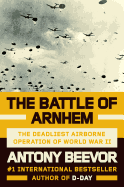
By September 1944, Allied armies had broken through German-occupied France and Belgium. Their next step--penetrating the Reich itself--meant overcoming two major obstacles: the heavily fortified Siegfried Line and the Rhine River. To that end, British Field Marshal Bernard Montgomery devised Operation Market Garden, in which British, American and Polish troops would parachute into the Netherlands, capture a series of key bridges and await reinforcements. Montgomery assumed German resistance would be light after devastating losses in Normandy. He was wrong.
The British 1st Airborne Division was tasked with taking the road bridge over the Lower Rhine at Arnhem. This objective, the deepest into enemy territory, was meant to be the bridgehead in a continuing offensive, but most of the 1st Airborne never made it out of Arnhem. German strength was diminished but far from destroyed--sudden reinforcements turned Arnhem into a cauldron of urban combat, while units to the south (including the 101st Airborne Division of Band of Brothers fame) were bogged down by bad planning, spotty communication and unexpectedly fierce opposition. Market Garden achieved few of its objectives at tremendous cost. Its failure left the Netherlands at the mercy of the Germans, who extracted terrible tolls in retaliation for helping Allied paratroopers.
In The Battle of Arnhem, British military historian Antony Beevor chronicles how everything that could go wrong with Market Garden did go wrong. Beevor, author of numerous acclaimed World War II histories including Stalingrad and Berlin 1945, has an uncanny ability to layer in-depth information on units, movements and commanders with riveting personal stories, such that The Battle of Arnhem offers an intricate account for military history buffs while still remaining an engaging tale for general readers. --Tobias Mutter, freelance reviewer

